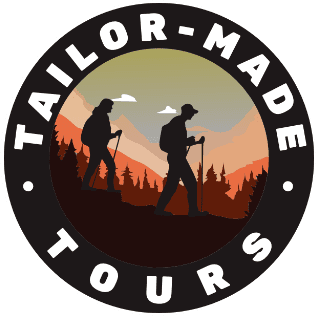For 23 years we have been planning and providing walking tours in Ireland for people from all over the world. We understand you have questions and these FAQs should help.
For questions regarding transportation to Ireland and the beginning of each route, see Travel in Ireland.
One of the attractions of a self-guided walking holiday is that your luggage is transferred for you and
you do not carry it. You will only need to carry a small daypack with water, food and other essentials. Your B&B hosts are responsible for transferring your luggage to the next accommodation. It should be there by 1600 (4:00 pm) or before you finish your walk. In some places a taxi company will be transferring your luggage, as it may not be a service the B&B provides. PLEASE PACK ONLY ONE ITEM OF LUGGAGE PER PERSON and in a good suitcase or backpack, maximum weight 15kgs. We provide a luggage sticker with our company name and your name written clearly on it.
Yes, some routes will require a transfer either by your host or by a pre-arranged taxi to the start of your
walk. Your hosts will agree on a time for this transfer with you. They can also assist you in finding transport should bad weather or an injury prevent you from walking that day.
Our accommodations are either Bed and Breakfast or Guesthouses, all chosen for their quality, unique character and distance to the trail.
A Bed and Breakfast in Ireland can vary in size and services but will always include breakfast, standard accommodations (linens, double mattress, bathing products). Some may offer a guest lounge, some may welcome guests to sit with the family in the evening, but a Bed and Breakfast feels more like staying in a home.
A guesthouse feels more like an inn or a small hotel, and you may find a TV, hair-dryer and tea/coffee making facilities in your room.
Yes. Rooms are usually ensuite (bathroom in your room, usually with shower instead of tub). Some accommodations may only provide private bathrooms adjacent to your room but we will book these rooms only when there are no ensuites available.
Unless otherwise noted, all of our hiking tours include breakfast beginning with your first full walking day and ending the morning you leave our last accommodation.
Packed lunches are available upon request at an added cost, usually about €8-10. Ask your hosts upon arrival if you would like them to provide a packed lunch for the next day. Sandwiches or filled rolls are often available in local shops or supermarkets and many will have hot food counters. Our route notes will provide suggestions for places to eat along your route.
Evening meals are on your own, with suggestions from us and your host on places to eat. In locations where restaurants are not within walking distance, your host will provide a meal which will vary according to the accommodation.
Irish Bed & Breakfasts are renowned for their “Full Irish Breakfast” which consists of bacon, sausage, fried egg, beans and toast. Some innkeepers may mix it up with tomatoes or black pudding. You are welcome to ask for cereals or a lighter option, most proprietors can accommodate this request.
Walks are graded according to how difficult we think they are. It will vary with each walker, depending on fitness, ability and physical condition. When grading the full waymarked way, we defer to Sport Ireland. For individual tours, we use the following guidelines:
Relaxed = 12-18km (8-11mi), 3-4hrs
Distances are short enough to be walked at a more leisurely pace; may have some climbs and uneven surface where the going is rough underfoot with some obstacles; appropriate for people with a moderate level of fitness and some hiking experience.
Moderate = 16-23km (10-14mi), 4-7hrs
Slightly more demanding walks, which will typically have some sections with steep climbs for long periods and the going underfoot can be rough including many obstacles; suitable for those accustomed to walking on rough ground and with a high level of fitness.
Strenuous = 22-30km (14-19mi), 5-9hrs
Physically demanding walks due to longer days requiring a faster pace; may include steep slopes and rough underfoot conditions; suitable for those accustomed to walking on rough ground and with a high level of fitness.
Keep in mind that severe weather conditions can quickly increase the difficulty level of a trail so always use your own judgment and pay attention to current conditions.
Our hiking routes follow the National Waymarked Ways, which can include a wide variety of paths. Terrain may include some surfaced roads, unsurfaced roads, forest paths, mountain tracks, sheep trails and boggy tracks. Expect to walk amongst livestock (usually cows and sheep). Some of the paths may have loose stones and rocks and in wet conditions, stones, wooden steps and stiles become slippery so sturdy boots are important. For more details, see descriptions for each hiking route.
Weather can be very unpredictable so waterproof rainwear is essential. Your clothing must be warm but also easy to put on and take off as you climb and descend. Tight clothing or jeans are NOT recommended. The temperatures can range from 5° – 19° Celsius (41° – 66° F) and the highest will rarely go over 25° Celsius (77° F). Due to the high humidity it can get warm in summer but on higher ground it can suddenly become colder due to the wind-chill factor. We recommend packing several light layers that can be washed in a sink and quickly hang dried.
The best time to walk here is from April to the end of October. We have wonderful daylight in mid-summer and often good weather until the late evening, so even a late start should allow plenty of time to complete the walks. On a number of routes, it is possible to take time to enjoy or explore a location by foot or bike before setting off on your walk. On June 21st, we have daylight from 04.30 to 23.30. The western seaboard enjoys about 45 minutes extra daylight.
Mobile (Cell) phone service is available on a range of networks in most areas of the country except deep
valleys. Always check with your mobile phone provider prior to discuss international plans. Another option is to unlock your cell phone so you can use an Irish SIM card. Vodafone, 3, Eir and Tesco Mobile are our biggest operators, all of them should be able to provide a SIM and top up credit for the duration of your stay. You shouldn’t have to pay for a SIM, the mobile providers in Ireland will give you one for free provided that you “top it up” with credit which you would have to do anyway to use.
WiFi is available in most towns and any in unusual places will be referred to in your route notes. Emergency numbers will be provided in your route notes.
In your tour pack you will find:
We provide one tour pack per two persons. A party of three persons will have one pack unless requested
otherwise. If clients would like a tour pack per person, or per 2 persons, let us know and we will advise the additional cost.
Your tour pack will be mailed to you at home on receipt of full payment. For bookings made within one month of start date, tour packs will be mailed to the first accommodation and you will receive route notes and travel information by e-mail.
While most routes include walking through small towns, do not expect to find easily accessible toilets. There are often rocks walls and bushes for “going in nature” and women may find it useful to pack a pee funnel which provides more privacy. In town, it’s as easy as ordering a drink or snack from a cafe/pub.

